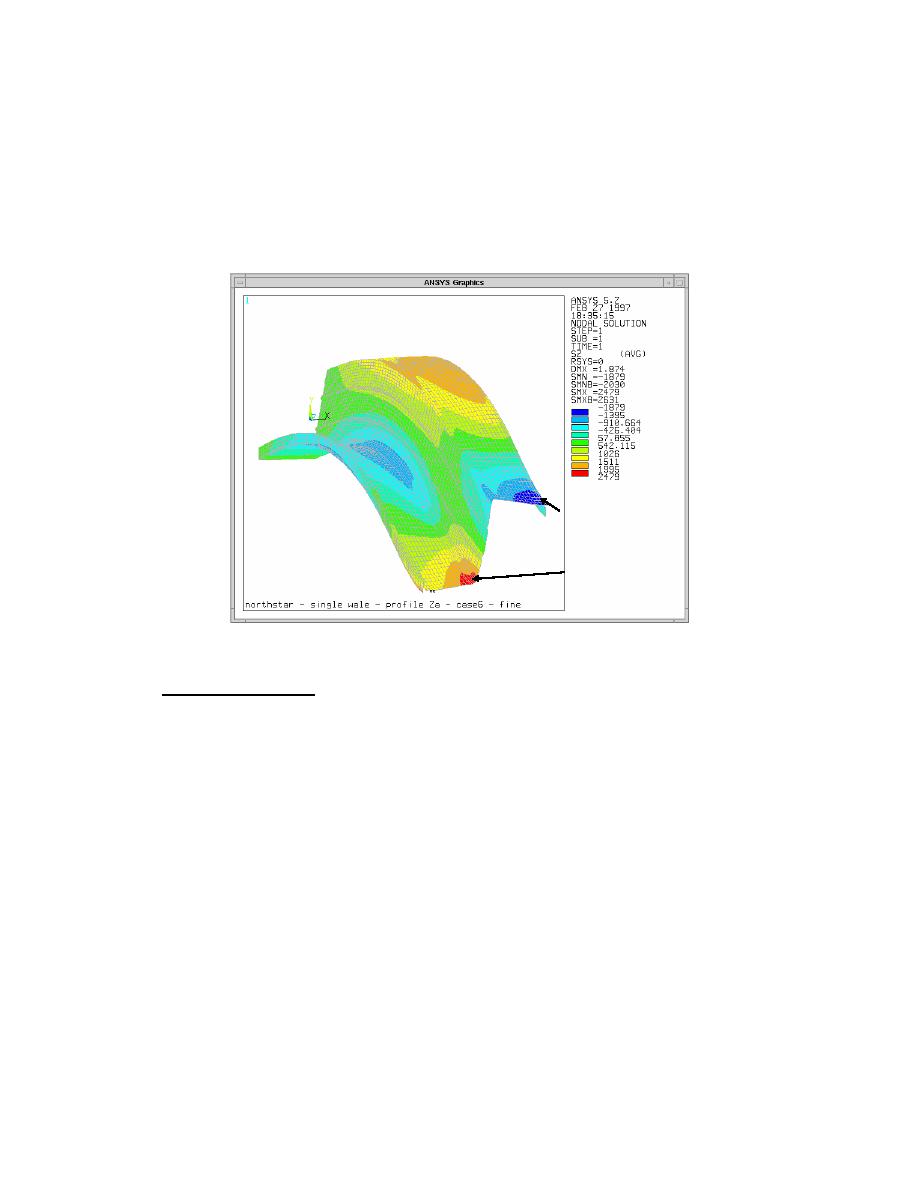
corners does the linear beam equation provide an adequate prediction of the actual stresses that
are developed. Conversely, if a Z-shaped profile does not have corners that are substantially
thicker than its nominal thickness, the linear beam equation under estimates the maximum
stresses and deflections that are developed. Also, it was discovered that maximum deflection
occurs at the interlock. This can possibly be explained by isolating the straight flange section with
the corner (web/flange intersection) being fixed, and the interlock being free. Hence, the flange
would behave similar to a cantilevered beam with the fixed end being at the corner of the sheet.
Minimum
(compression)
Maximum
(tension)
Normal stresses in sheet pile midportion.
Additional References:
ASTM D790, Standard Test Methods for Flexural Properties of Unreinforced and Reinforced
Plastics and Electrical Insulating Materials
ASTM D638, Standard Test Methods for Tensile Properties of Plastics
ASTM D695, Standard Test Methods for Compressive Properties of Plastics
ASTM D5262, Evaluating the Unconfined Tension Creep Behavior of Geosynthetics
ASTM D4226A, Standard Test Methods for Impact Resistance of Rigid Poly (Vinyl
Chloride)(PVC) Building Products
ASTM D256, Standard Test Methods for Determining the Izod Pendulum Impact Resistance of
Plastics
ASTM G 154, Standard Practice for Operating Fluorescent Light Apparatus for UV Exposure of
Nonmetallic Materials
Applied Technical Services, Northstar Vinyl Products Material Test Reports, D24066, March 6,
2002
71



 Previous Page
Previous Page
